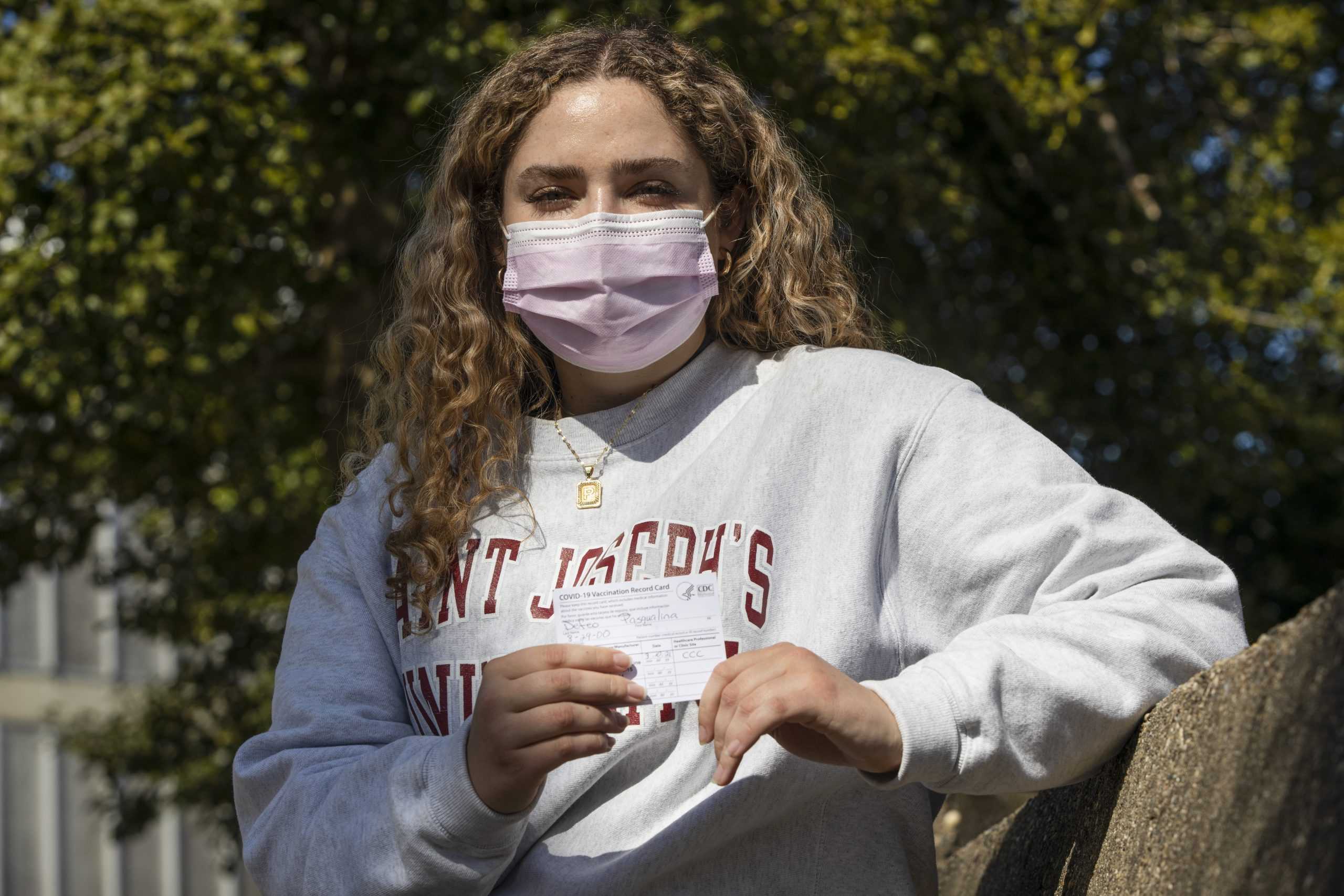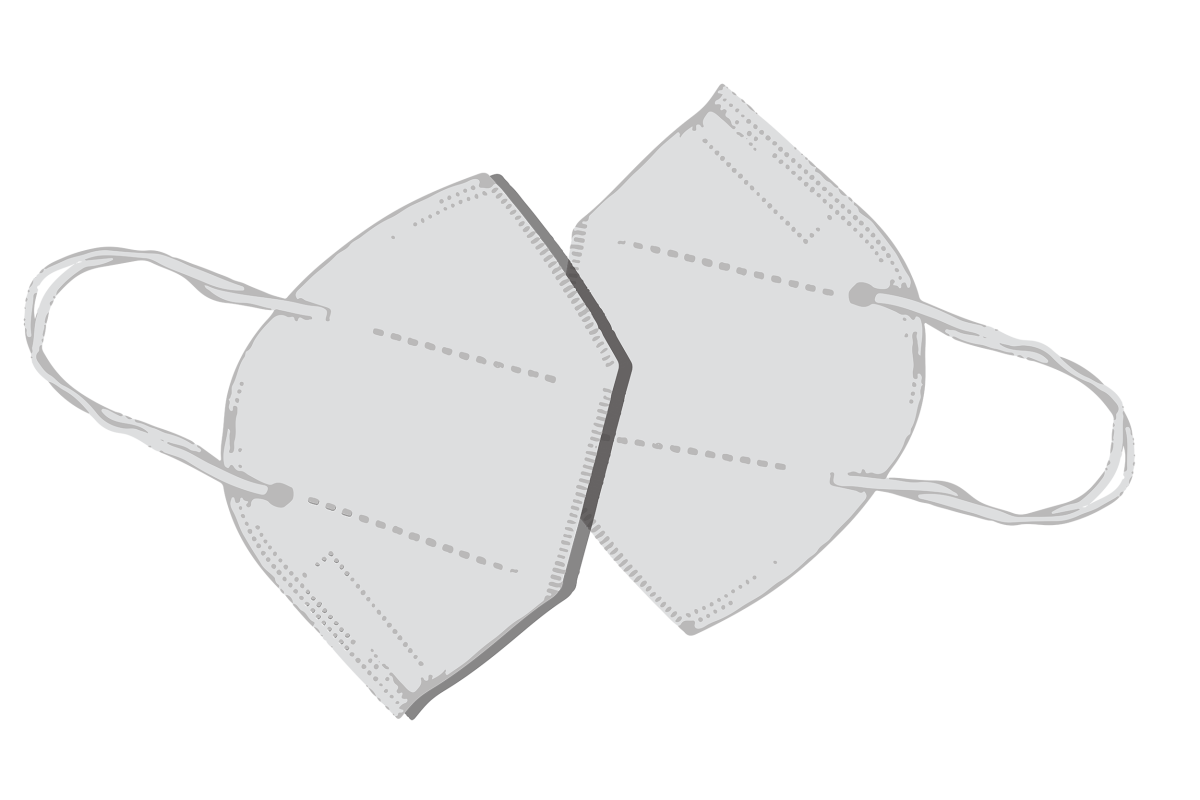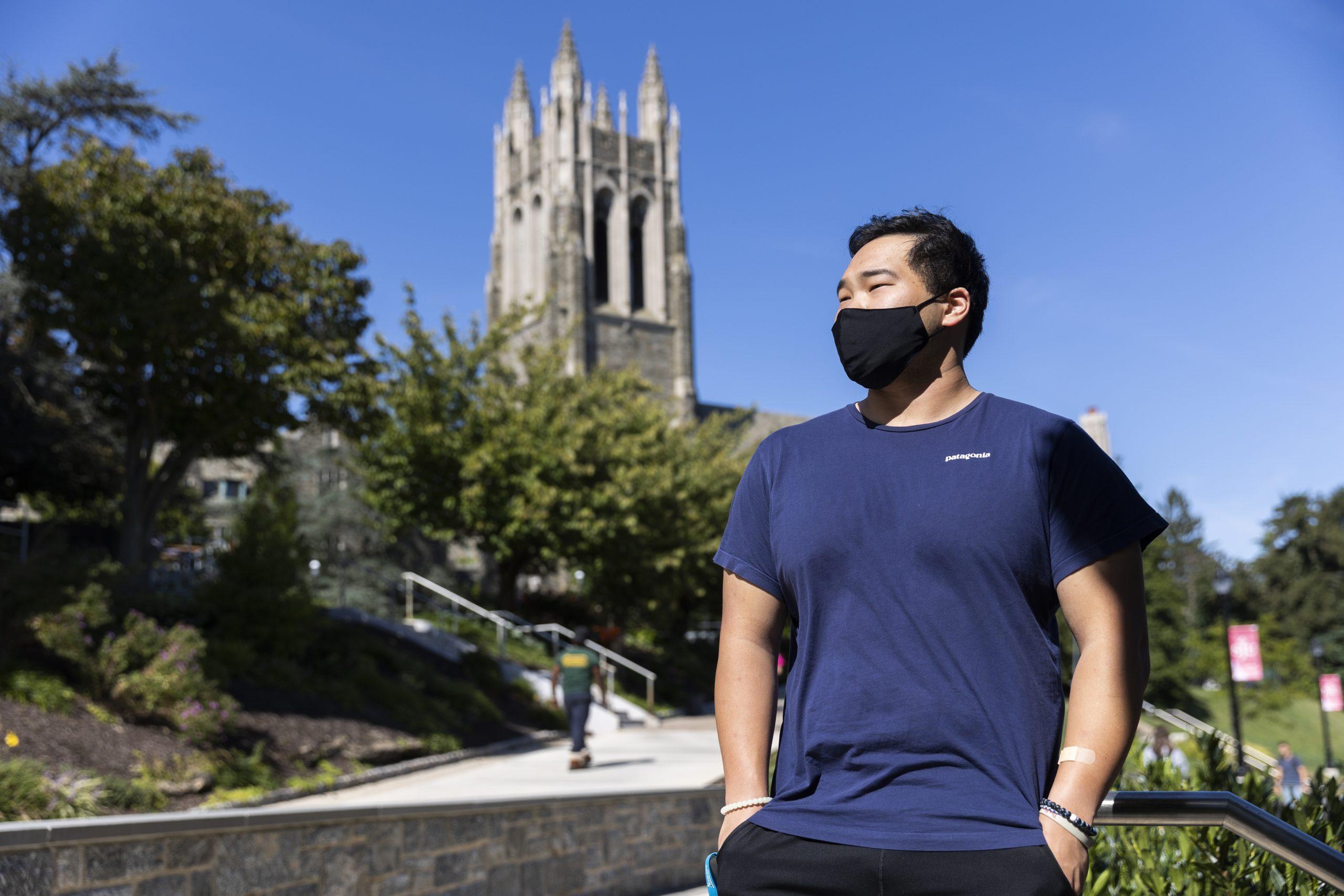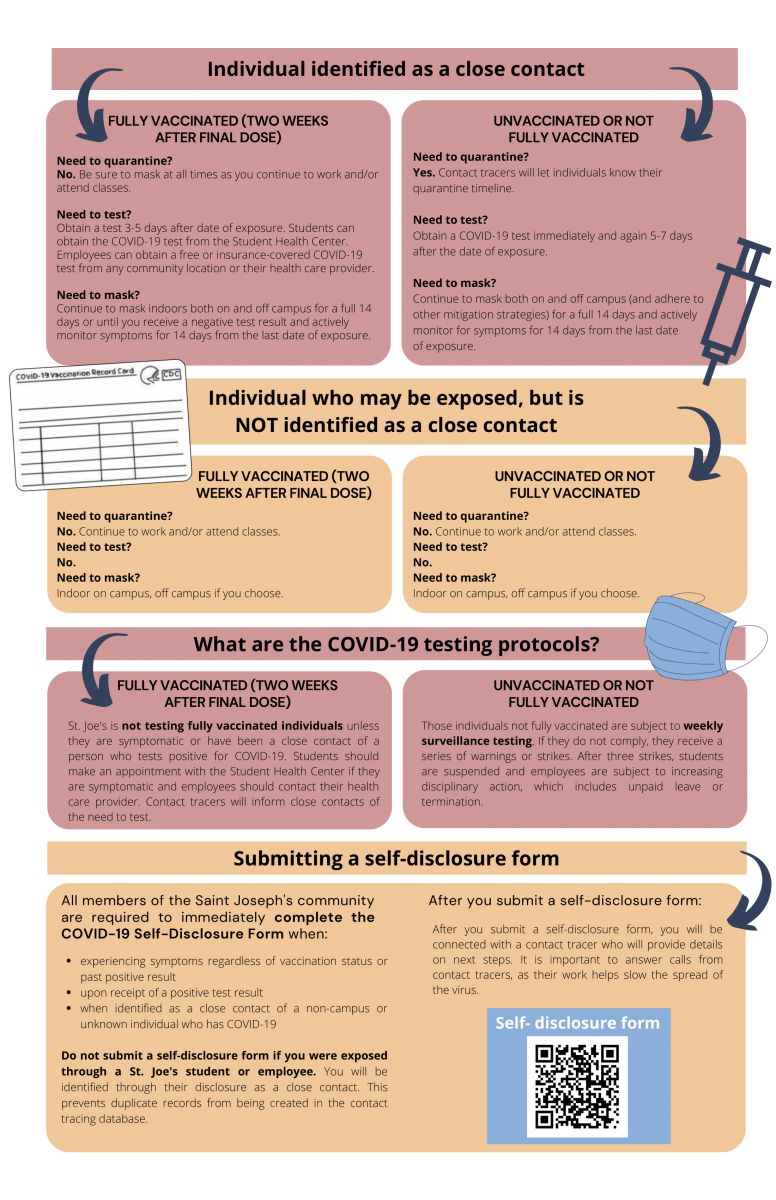Some St. Joe’s students have started receiving COVID-19 vaccines, both in the Philadelphia metropolitan area and in their hometowns.
Many college students in Pennsylvania are currently ineligible to receive the COVID-19 vaccine. But students in the 1A phase are eligible in Pennsylvania, and students in phase 1A or 1B are eligible in Philadelphia and New Jersey. Students in these phase include those who work in front-line jobs, such as health care or child care settings, and those who are immunocompromised.
St. Joe’s recommends students get vaccinated as soon as they are able to, but does not require them to do so.
Amanda Lucas ’22 received her first dose of the Moderna vaccine in her hometown of Scranton, Pennsylvania on March 3, after hearing about appointment openings from her mom, an elementary school teacher.
Even with the two hour drive to Scranton, Lucas said her experience getting the vaccine was relatively quick.
“It was actually pretty simple, I just walked into the pharmacy and because they already had the appointment scheduled, it was easy,” Lucas said.
Lucas said she was conscious of not taking a vaccine from someone in Philadelphia who needed it.
“If people have an opportunity to go home and get it, I would suggest doing that, so that way people in Philadelphia, who don ’t have the means to go somewhere else, have the opportunity to get the vaccine,” Lucas said.
Racial and age disparities in vaccine distribution are two main issues in Philadelphia and nationwide. Ineligible college students have contributed to the disparity by receiving the vaccine prior to being officially eligible, according to The Daily Pennsylvanian. Some University of Pennsylvania students received the vaccine from the Federal Emergency Management Agency (FEMA) vaccination site at the Philadelphia Convention Center, despite not qualifying for either phase 1A or 1B, The Daily Pennsylvanian reported.
Pasqualina Defeo ’23 is from Connecticut, but she received the Johnson & Johnson vaccine in Camden, New Jersey. Defeo said she heard about the New Jersey vaccination site from family members in New Jersey, and said the process was efficient.
“It was so fast, I just drove to the Camden Community College campus, and they directed me,” Defeo said.
Defeo, who has Type 1 diabetes, qualifies for the vaccine in the 1B phase and signed up to receive the vaccine through the Cooper Hospital Health Portal.
“I actually made an appointment for October, which was really far, but then I kept checking, and I was just able to bump that up as soon as possible,” Defeo said.
Defeo said a number of her friends have also received the vaccine, many of them at the FEMA vaccination site at the Philadelphia Convention Center.
“It’s really important for the elderly population to be protected first, but also I think younger people are probably more likely to be spreading the coronavirus,” Defeo said.
According to the Centers for Disease Control and Prevention (CDC), while COVID-19 affected predominantly older adults at the beginning of the pandemic, by last summer and into fall, young people aged 20 to 29 accounted for more than 20% of infections and were more likely to spread the virus. Scientists have continued to debate whether young people, because they are more likely to spread COVID-19, should be prioritized for vaccination.
Alexa Romanella ’22, a psychology major, is researching St. Joe’s student attitudes toward the vaccine. Romanella created a campuswide survey as part of an independent research project approved by the university to examine which students are most likely to get the COVID-19 vaccine. The survey consists of three sections: vaccination history, general vaccine attitudes and attitudes specifically toward the COVID-19 vaccine.
Romanella, who works in a cardiologist’s office, qualified in Philadelphia because of her job and received her first dose of the Pfizer vaccine at the FEMA site. Students getting vaccinated when the time comes is extremely important, Romanella said.
“My biggest hope is that the university is going to be able to use this information to really push whether or not they believe students should get the vaccines,” Romanella said. “And, if there is a large majority of students that aren’t planning on getting the vaccine, to consider advocating for the vaccine and requiring some education.”



















































